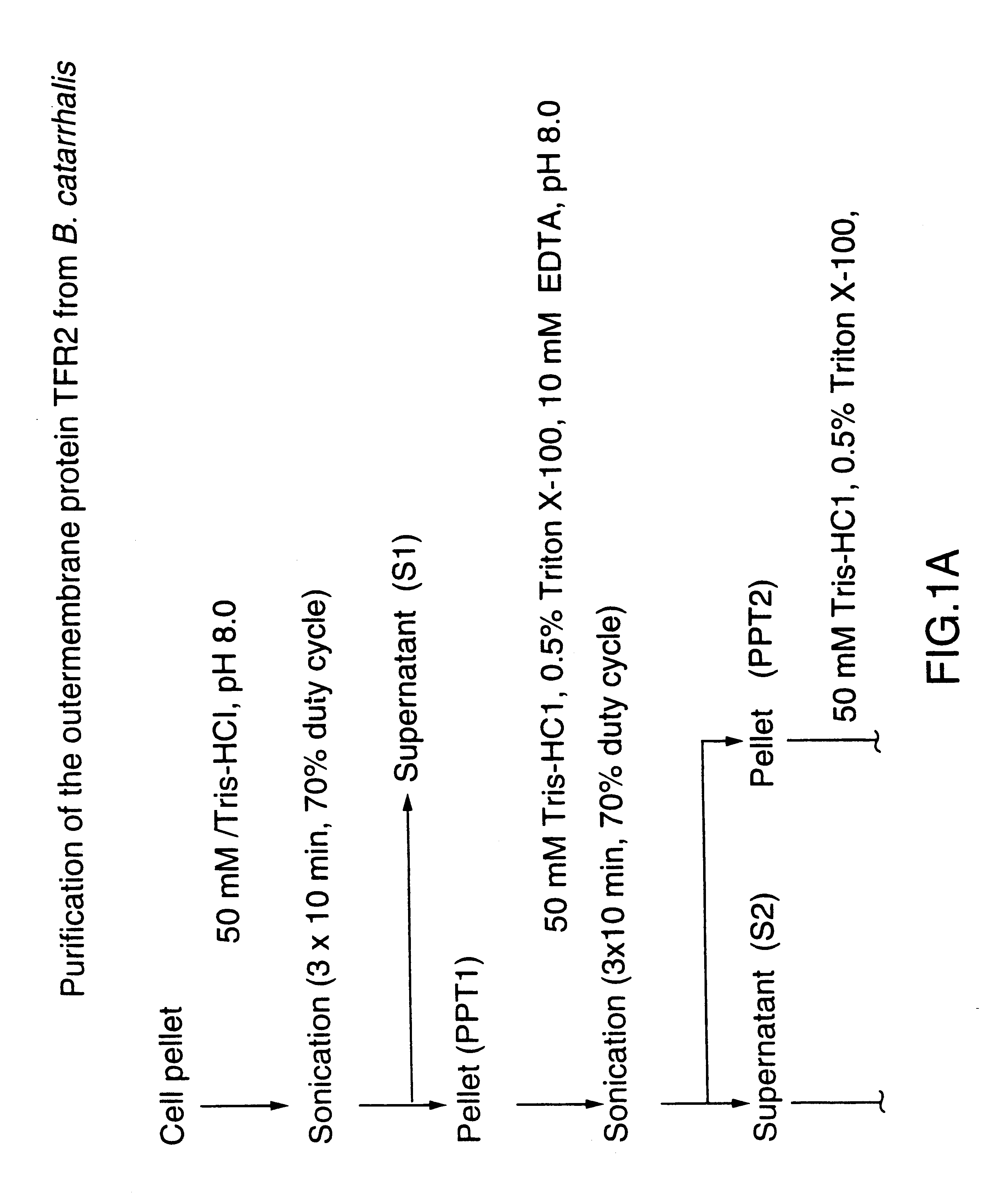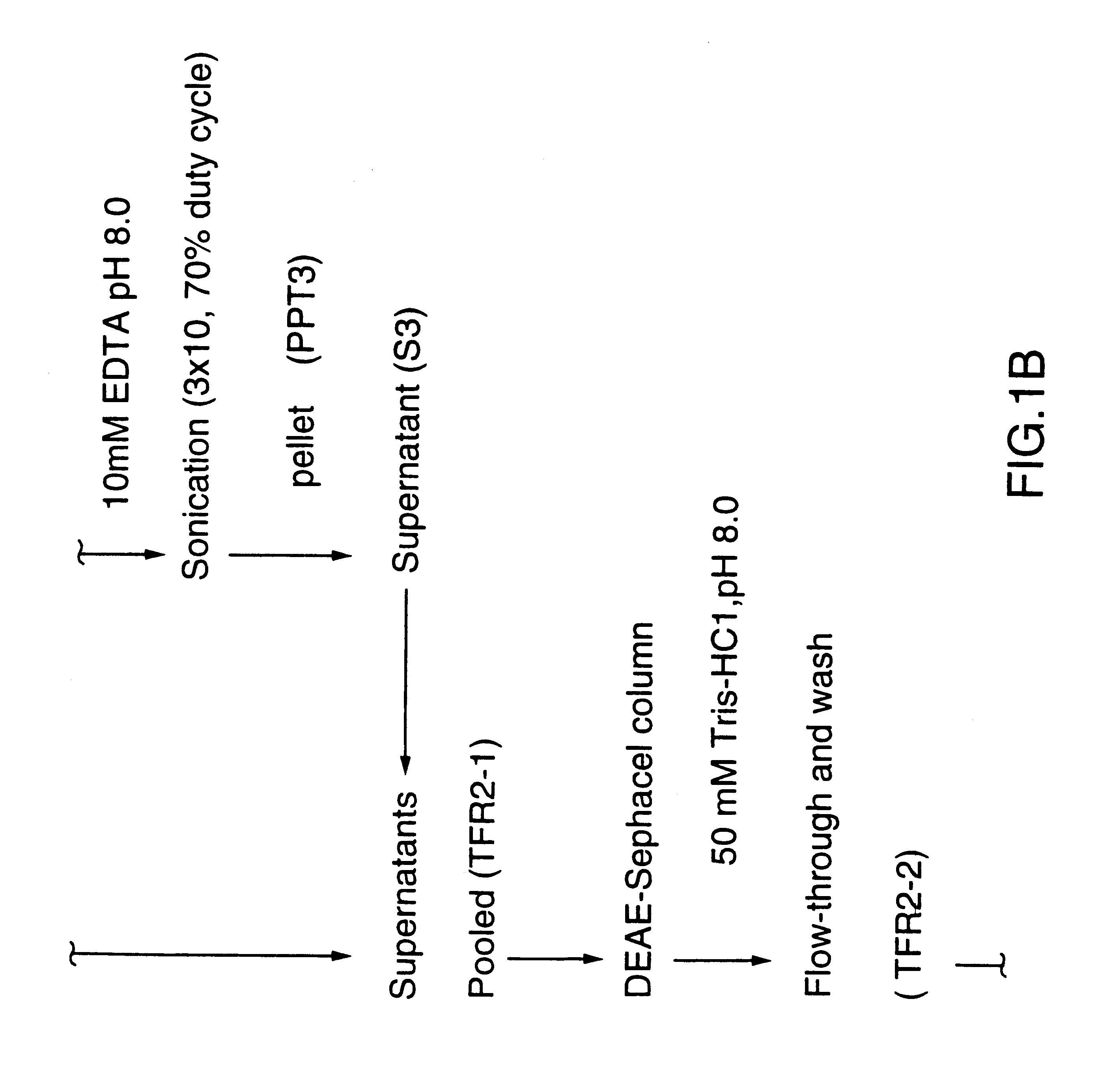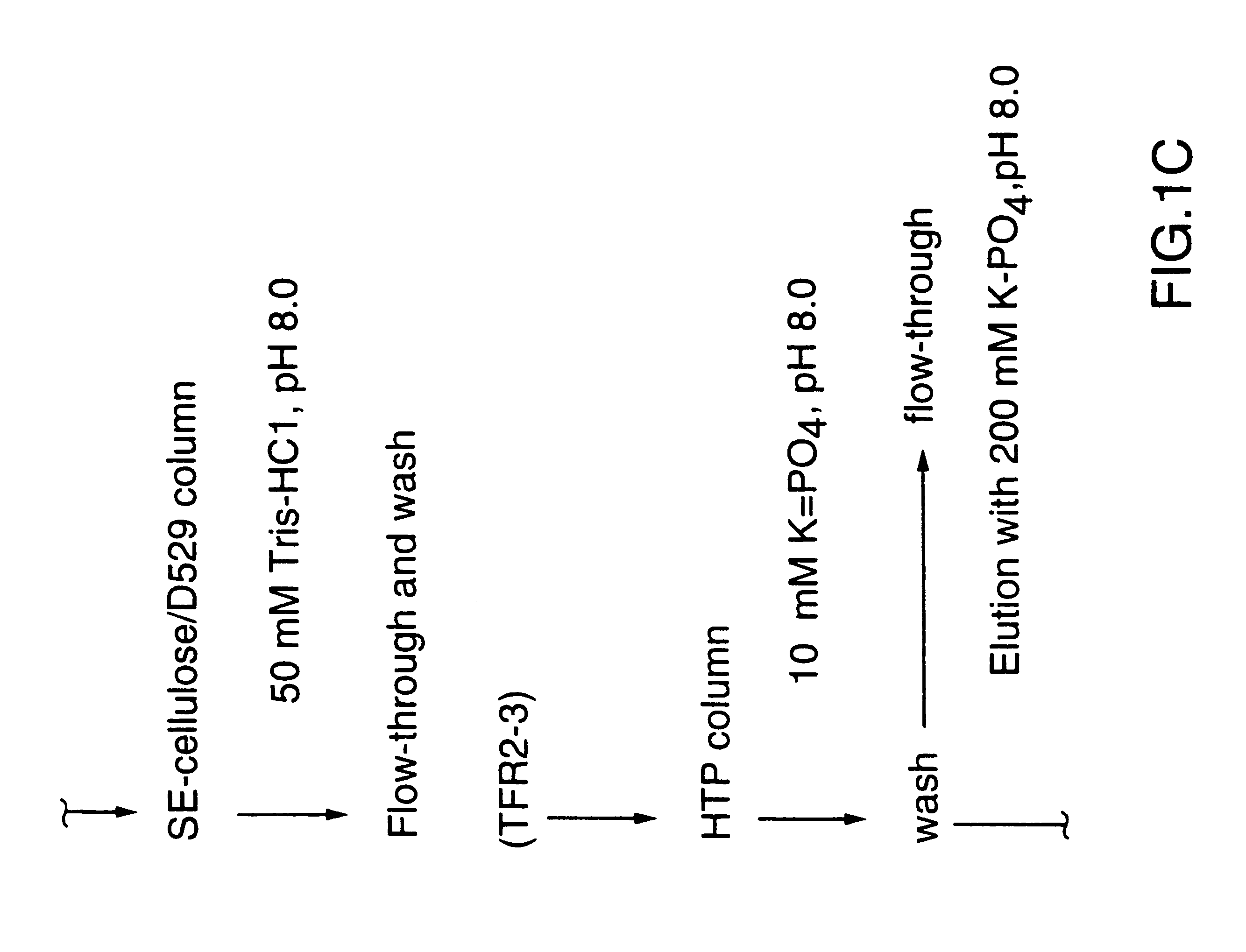Transferrin receptor protein of Moraxella
a technology of moraxella and receptor protein, which is applied in the direction of bacterial antigen ingredients, peptide sources, non-active ingredients of pharmaceuticals, etc., can solve the problems of serious disease, speech and cognitive impairment in children, and hearing loss and other problems
- Summary
- Abstract
- Description
- Claims
- Application Information
AI Technical Summary
Benefits of technology
Problems solved by technology
Method used
Image
Examples
example 1
This Example illustrates the growth of M. catarrhalis.
The M. catarrhalis strains used were 135, 4223 (ref. 35), 5191 (ref. 35) (all middle ear isolates), ATCC 25240, Q8 (expectorate isolate) and RH408.
To provide cells for isolation of TfR2, M. catarrhalis strains were routinely maintained on chocolate agar plates (BBL).
M. catarrhalis strain 4223 was inoculated into 20 mL of brain heart infusion (BHI) broth. The culture was incubated overnight with aeration at 37.degree. C. For growth under iron-restricted conditions, one mL of the overnight-culture was inoculated into 20 mL of BHI broth containing 25 .mu.M EDDA and the culture was grown at 37.degree. C. for approximately 3 to 4 h. Cells grown to mid-log phase (A.sub.578 >0.5) were harvested by centrifugation at 10,000.times.g for 20 min. The pellet was used for extraction of transferrin receptor (TfR2) protein as described in Example 3 below.
example 2
This Example illustrates the generation of a non-clumping strain (RH408) of M. catarrhalis.
M. catarrhalis strain 4223 was inoculated into several flasks containing 20 mL of BHI broth, and the cultures were incubated with shaking (170 rpm) overnight at 37.degree. C. Five mL of each overnight culture were transferred to individual 1 mL tubes, and were left sitting undisturbed at room temperature for 3 to 8 hours, to allow bacteria to sediment. One hundred .mu.L of the cleared upper phase of each culture medium were used to inoculate 25 mL of BHI broth and cultures were incubated overnight at 37.degree. C., as described above. This passaging was repeated six times, using 25 .mu.L of cleared medium to inoculate 25 mL of BHI for each overnight culture. Non-clumping bacterial cultures were identified by measuring the A.sub.578 at intervals over a 3 hour time period, in order to compare the sedimentation rates of the passaged strains to that of the original M. catarrhalis strain 4223 cultu...
example 3
This Example illustrates the extraction of transferrin receptor protein TfR2 by affinity purification.
Affinity purified TfR2 was prepared from total membranes as described in reference 29 using Sepharose 4B (Pharmacia) conjugated human transferrin (Sigma). Bacterial receptor proteins bound to the affinity matrix were selectively eluted using a buffer of 50 mM Tris-HCl pH 8.0, 1M NaCl, 10 mM EDTA, 0.05% sodium lauryl sarkosinate, 2M guanidine. Eluted proteins were dialized against 50 mM Tris-HCl pH 8.0.
PUM
| Property | Measurement | Unit |
|---|---|---|
| apparent molecular mass | aaaaa | aaaaa |
| wt % | aaaaa | aaaaa |
| wt % | aaaaa | aaaaa |
Abstract
Description
Claims
Application Information
 Login to View More
Login to View More - R&D
- Intellectual Property
- Life Sciences
- Materials
- Tech Scout
- Unparalleled Data Quality
- Higher Quality Content
- 60% Fewer Hallucinations
Browse by: Latest US Patents, China's latest patents, Technical Efficacy Thesaurus, Application Domain, Technology Topic, Popular Technical Reports.
© 2025 PatSnap. All rights reserved.Legal|Privacy policy|Modern Slavery Act Transparency Statement|Sitemap|About US| Contact US: help@patsnap.com



